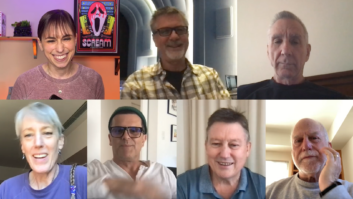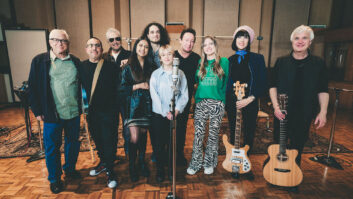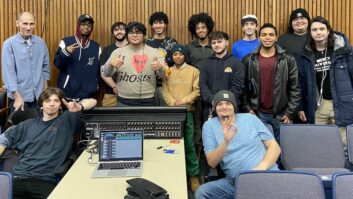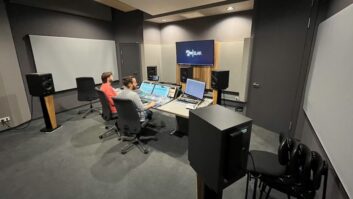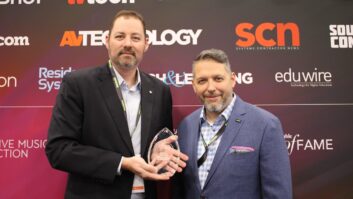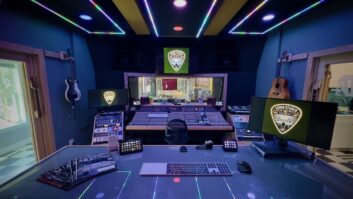With 25 years under its belt, the New York-based complex now known as Avatar Recording Studios is one of the city’s legendary music haunts. It has hosted a parade of superstars that includes Bruce Springsteen, Diana Ross, Talking Heads, David Bowie, Nile Rodgers, The Ramones, Eric Clapton and Foxy Brown. Unlike other studios that pride themselves on their history, vibe and vintage equipment, Avatar places as high a premium on its future-mindedness as on its heritage, emphasizing such high-tech areas as ISDN connectivity, Pro Tools HD and Direct Stream Digital. Nowhere else in New York do past, present and future collide the way they do at Avatar.
It is a mark of the studio’s greatness that it has survived bankruptcy filing, an auction, a name change (from Power Station) and shifts in ownership.
Asked what makes Avatar special, president/owner Kirk Imamura says, “First of all, it’s the rooms. They sound great, even after all these years. I have to credit [Power Station founder] Tony Bongiovi for the unique design. It still stands today. Beyond the sound, it’s the look and feel of the wood. The way Studio A’s tracking room is domed, it gives you a warm feeling when you walk in. Drums sound great in there. The studio musicians who come in can’t stop raving about the room, and their talents really jump out in it.”
Imamura also attributes the studio’s success to its commitment to nurturing the engineering staff. “We treat our assistant engineers very well here,” he says. “They have a pretty good employment arrangement with us where they get a guaranteed number of hours of work. Because of that, people are loyal here. Scott Young, our chief engineer, still believes in training and passing down his knowledge.” Studio manager Tino Passante has been with the studio since the Power Station era. Chief technical engineer Ken Bailey and Young date back to the early Avatar days before Imamura took over in early 2001.
Another factor in the studio’s success, according to Imamura, is its casual, but professional attitude. “We don’t try to impress,” he says. “The rooms speak for themselves, so we don’t feel we need to intimidate people when they come in.”
Judging by the number of clients who are making return trips, Imamura’s approach is paying off. Forceful Enterprises — the production company owned and operated by the famed Full Force production crew — recently leased space on the second floor of the Avatar building for its new headquarters. This move brings Full Force full circle to the studio where the crew got their start.
“We actually started out in this building more than 20 years ago when it was Power Station,” says Full Force leader Bowlegged Lou. “It’s nice to be back. It’s wonderful to have these great-sounding rooms right next door.”
Similarly, engineer/mixer Roy Hendrickson is “returning” to Avatar as an engineer/mixer-in-residence. Hendrickson was a Power Station staffer from 1985 to 1992, when he left to pursue a freelance career and has since worked in other world-class studios. He credits the Avatar rooms as acoustically and ergonomically outstanding: “The building feels like home to me. It is a great place for inspiration and creative support. It was like that during Power Station days, and it is still like that today as Avatar.”
Full Force and Hendrickson are the newest members of an elite group of engineer/musicians. Others include Jeff Bova, Jan Folkson and Jim Janik. “I think of this creative community as a marketplace where people are comfortable doing what they do,” says Imamura. “As people get more and more familiar with other people who do the same thing, something great is bound to come out of the situation.”
This tradition of musicians, engineers and producers cross-fertilizing each other’s projects is a throwback to the early days when legends like Bob Dylan would meet young upstarts, like Full Force, and end up collaborating on sessions. Imamura wanted to build a similar culture at the new Avatar, and he’s already seen evidence that his efforts are bearing fruit. For instance, when producer Gregg Wattenberg was at the studio recently working on material by Chantal Kreviazuk, he got Michelle Branch, who was working in another session, to sing with Kreviazuk on a track.
If Avatar is a hotbed of creative activity in New York, then it is also a nexus of state-of-the-art recording and processing. Recently, Avatar installed a Pro Tools HD system, keeping pace with the latest generation of the popular digital audio workstation. Avatar is also a pioneer among independent recording studios in offering Direct Stream Digital recording, the process that underlies the Sony/Philips Super-Audio CD format.
Imamura explains: “There’s a producer here, Yasohachi ‘88’ Itoh, who was one of the first clients for Power Station. He’s affiliated with Sony’s Japanese studios, and he wanted to produce albums here that could be a showcase for SACD. Since I’m a Sony veteran myself, having worked for the company for 17 years, I hit it off with him and we decided to do this.” Besides Itoh’s projects for Sony, several jazz albums have been cut at Avatar on one of two DSD systems: the 2-track “silver box” and the 8-track Sonoma recorder/editor. Clients have included Hank Jones and Elvin Jones (Studio A), Max Roach and Clark Terry (Studio C), and various Telarc projects. “The end result sounds great,” says Imamura of DSD. “It’s just another way for us to gear up for the future.”
Alongside its commitment to digital technology, Avatar has decided to stay with analog mixing consoles in its four main rooms. Studio A houses a vintage Neve 8068 and the tracking space for which Avatar is most renowned — a room that Sony and Yamaha have sampled for their high-end reverb boxes. Studio B’s control room is equipped with a 72-input Solid State Logic SSL 9000 J analog console with a 5.1 monitoring matrix, Total Recall and Ultimation. It adjoins a 20×30-foot tracking room with a ceiling height of 15 feet at its highest point.
Studio C is based around a 72-input Neve VRP with a 24×40-foot studio with 24-foot ceilings and flexible architecture, which allows the space to be divided into three large iso booths. The recently rebuilt Studio D — with its glossy black walls — departs from the natural wood tone in the rest of the facility. It now houses a second SSL 9000 J.
The consoles reflect the preferences of Avatar’s clients, who appreciate digital technology in the form of hard disk recorders, editors and processors, but prefer the sound and feel of large-format analog consoles. Listening to clients and staff might seem like an obvious tactic for a studio owner, but Imamura says that he is surprised at how often equipment decisions are made without looking at the wishes of the people who use the gear.
As attentive as Imamura is to his high-end clients, he is equally supportive of the underground community. “If we have unbooked studio time,” he says, “we invite unsigned artists and give them a reduced rate so that they can put together demos. We want to encourage people who want to get into the industry. Why shouldn’t they have a good-sounding demo?”
To nurture the local music community was one of the founding principles at Power Station, which opened in 1977 as a venue for seminal New York acts such as The Ramones and the Talking Heads, as well as a wealth of rock, pop, jazz and advertising clients. Bongiovi ran Power Station until 1996, when he declared bankruptcy and was forced to auction off the studio. The buyer was a group of entrepreneurs, led by Voikunthanath Kanamori, who renamed the facility Avatar but otherwise kept it largely intact. Imamura took the helm in early 2001.
Today, a re-energized Avatar thrives, surviving even the terrorist attacks of September 11, which dealt a serious blow to the New York industry. It took a toll on the studio’s bookings, but business has picked up, according to Imamura. “After September 11, a lot of projects were put on hold until early spring,” he explains. “That’s when a lot of projects got the go-ahead from the record labels, and we’re starting to feel the effects of that. Normally, summertime is slow in the studio business, but this year is atypical. It looks like summer’s going to be busy for us.”


